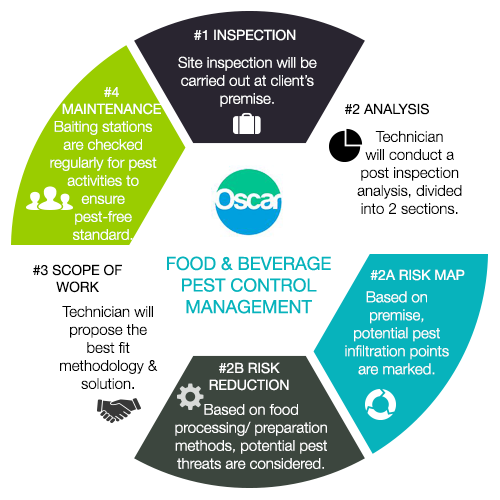The Role Of Parasite Exterminators In Environmental Sustainability
The Role Of Parasite Exterminators In Environmental Sustainability
Blog Article
Material By-Brooks Sejersen
You may think that parasite exterminators are just concerned with getting rid of insects, however their role surpasses that. They play an important component in ecological sustainability.
By utilizing integrated Environmental impact studies monitoring techniques, they not just eliminate pests yet additionally safeguard biodiversity.
In addition, they utilize sustainable insect extermination approaches to reduce environmental dangers.
So, following time you wonder about the value of insect exterminators, remember their contribution to a greener and healthier world.
The Relevance of Integrated Parasite Monitoring
You ought to recognize the significance of integrated bug management in keeping a sustainable atmosphere.
Integrated Insect Management (IPM) is a strategy that concentrates on protecting against and managing bugs while reducing the use of damaging chemicals. By implementing IPM approaches, you can effectively handle insect populations without causing injury to the atmosphere.
One key facet of IPM is making use of organic controls, such as killers and parasites, to normally regulate pest populations. This lowers the need for chemical pesticides, which can have destructive impacts on wildlife and ecological communities.
Additionally, Brown rat making use of cultural and physical controls, such as plant turning and exemption strategies, to avoid insects from becoming an issue in the first place.
Safeguarding Biodiversity Through Bug Control
We can guard biodiversity through effective insect control methods that prioritize the preservation of all-natural environments. By using responsible bug control practices, we can safeguard and maintain the delicate balance of varieties within our setting. Below are three methods which parasite control adds to safeguarding biodiversity:
- ** Maintaining native flora and animals ** - By targeting invasive types that threaten native plants and animals, pest control assists make sure the survival of indigenous types and maintains the all-natural variety of ecosystems.
- ** Preventing the spread of diseases ** - Managing insects such as insects and ticks minimizes the danger of conditions spreading to wildlife populaces, protecting biodiversity and avoiding prospective episodes.
- ** Preserving threatened types ** - By handling parasites that prey on or take on jeopardized varieties, insect control efforts can boost the opportunities of survival and promote the recovery of prone populations.
Via accountable parasite control techniques, we can proactively add to the preservation of biodiversity and the sustainability of our environment.
Mitigating Environmental Threats With Lasting Insect Elimination Methods
By utilizing lasting parasite extermination techniques, you can efficiently minimize ecological dangers while guaranteeing the safety and well-being of both human beings and the all-natural ecological community. Typical parasite control techniques usually include the use of hazardous chemicals that can have damaging effects on the setting.
Nonetheless, sustainable parasite elimination approaches focus on minimizing these dangers by using environmentally friendly options. For example, incorporated parasite monitoring (IPM) approaches focus on making use of safe and naturally degradable items, along with natural killers to control pest populaces. This strategy not just reduces the negative effect on the setting but likewise assists to preserve the delicate balance of the community.
Additionally, lasting bug extermination approaches advertise the preservation of biodiversity by targeting specific insects without hurting valuable organisms. By taking on these techniques, you can contribute to a more lasting and eco-friendly technique to pest control.
Verdict
You are the pest exterminator, the guardian of nature's consistency. With integrated bug management, you stabilize the delicate community, making sure the survival of diverse varieties.
Via sustainable methods, you reduce ecological threats, keeping the fragile balance undamaged.
Like a harmony conductor, you orchestrate the rhythm and flow, protecting the biodiversity that dancings in ideal consistency.
With every action you take, you produce a world where nature thrives, where pests retreat, and where sustainability reigns supreme.
